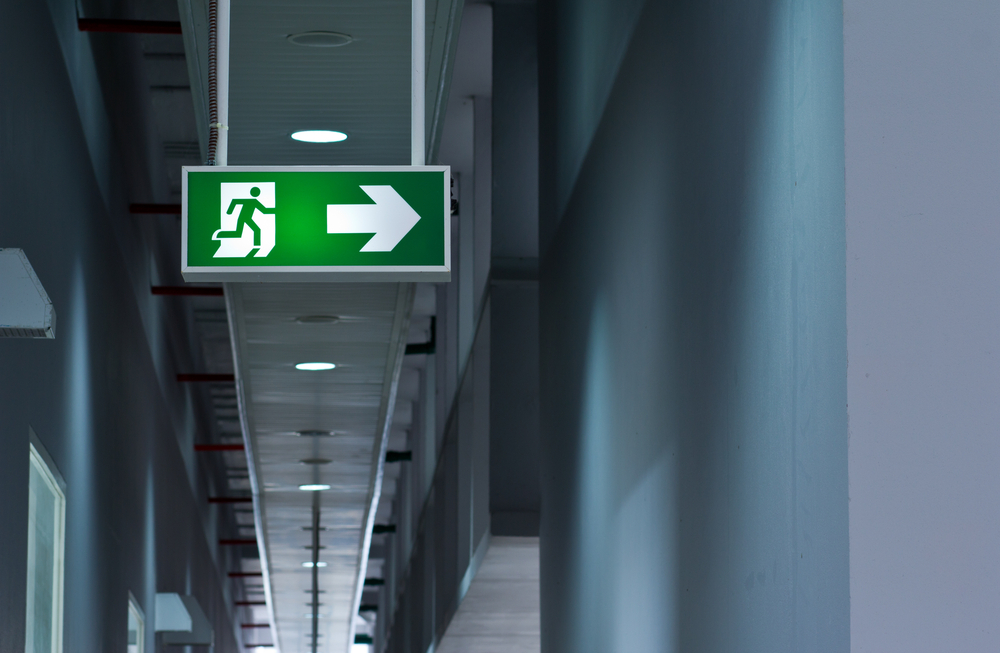Emergency lighting best practices

Emergency lighting plays a crucial role in ensuring building safety, particularly in times of emergencies. Here are some recommended best practices:
Install in Essential Areas: Place emergency lighting strategically in areas crucial for safe evacuation during emergencies, including exits, stairways, corridors, and other key escape routes.
Backup Power Usage: Emergency lighting systems should incorporate a reliable backup power source to ensure continuous operation in the event of a power outage, guaranteeing visibility even during failures.
Regular Testing and Maintenance: Consistent testing and maintenance routines are essential to verify the proper functioning of emergency lighting. Monthly tests and annual maintenance checks should be performed to confirm that all lights operate correctly and that backup power sources are in optimal condition.
Optimal Placement and Coverage: Position emergency lighting where it is most needed to ensure adequate coverage. The lighting should be sufficiently bright to illuminate exit signs and egress paths without causing glare or other potential hazards.
Appropriate Lighting Types: Select the type of emergency lighting based on the specific requirements of the space. This may involve choosing between fluorescent, LED, or incandescent lighting, taking into consideration factors such as brightness, energy efficiency, and color rendering.
Adherence to Local Codes: Emergency lighting must comply with local codes and regulations, which can vary by jurisdiction. Building owners and operators should ensure that emergency lighting installations meet all relevant codes and regulations applicable to their location.
Enhanced Visibility for Navigation: Emergency lighting should enhance visibility to aid people in navigating through spaces safely, particularly in complex or large buildings where clear guidance is crucial.
Consideration of Different Emergency Scenarios: Tailor emergency lighting plans to address various emergency scenarios, taking into account factors such as fire, power outages, or natural disasters. This ensures adaptability to different situations.
Integration with Fire Alarm Systems: Integrate emergency lighting systems with fire alarm systems for synchronized activation. This coordination ensures a prompt response, immediately providing essential lighting when the fire alarm is triggered.
Employee Training: Provide training to building occupants on the location of emergency lighting, its significance, and the procedures to follow during evacuations. Well-informed occupants contribute to a more effective emergency response.
Consideration of Aesthetic Elements: While prioritizing functionality, consider the aesthetic elements of emergency lighting installations to ensure they blend seamlessly with the overall design of the building.
Monitoring and Notification Systems: Implement monitoring systems to regularly check the status of emergency lighting and receive notifications about any malfunctions or maintenance requirements. This proactive approach helps address issues promptly.
Customization for Specific Occupancies: Tailor emergency lighting plans to suit the specific occupancy and use of the building. Different types of facilities may have unique requirements based on their functions and the number of occupants.
Incorporation of Energy-Efficient Technologies: Embrace energy-efficient technologies in emergency lighting systems to minimize environmental impact and reduce long-term operational costs.
Regular Review of Emergency Procedures: Conduct regular reviews of emergency procedures, including the use of emergency lighting, to identify areas for improvement and ensure alignment with current safety standards.
Collaboration with Emergency Services: Foster collaboration with local emergency services to gain insights and recommendations for optimizing emergency lighting strategies based on their expertise and experiences.
Documentation of Emergency Lighting Plans: Maintain detailed documentation of emergency lighting plans, including system specifications, testing schedules, and maintenance records. Proper documentation facilitates compliance checks and troubleshooting.
Disclaimer
This information is provided with the expectation that individuals will independently evaluate and validate all inforrmation with accredited experts. Exiting assumes no responsibility for any harm, losses, or damages resulting from the utilization or dependence on this information .